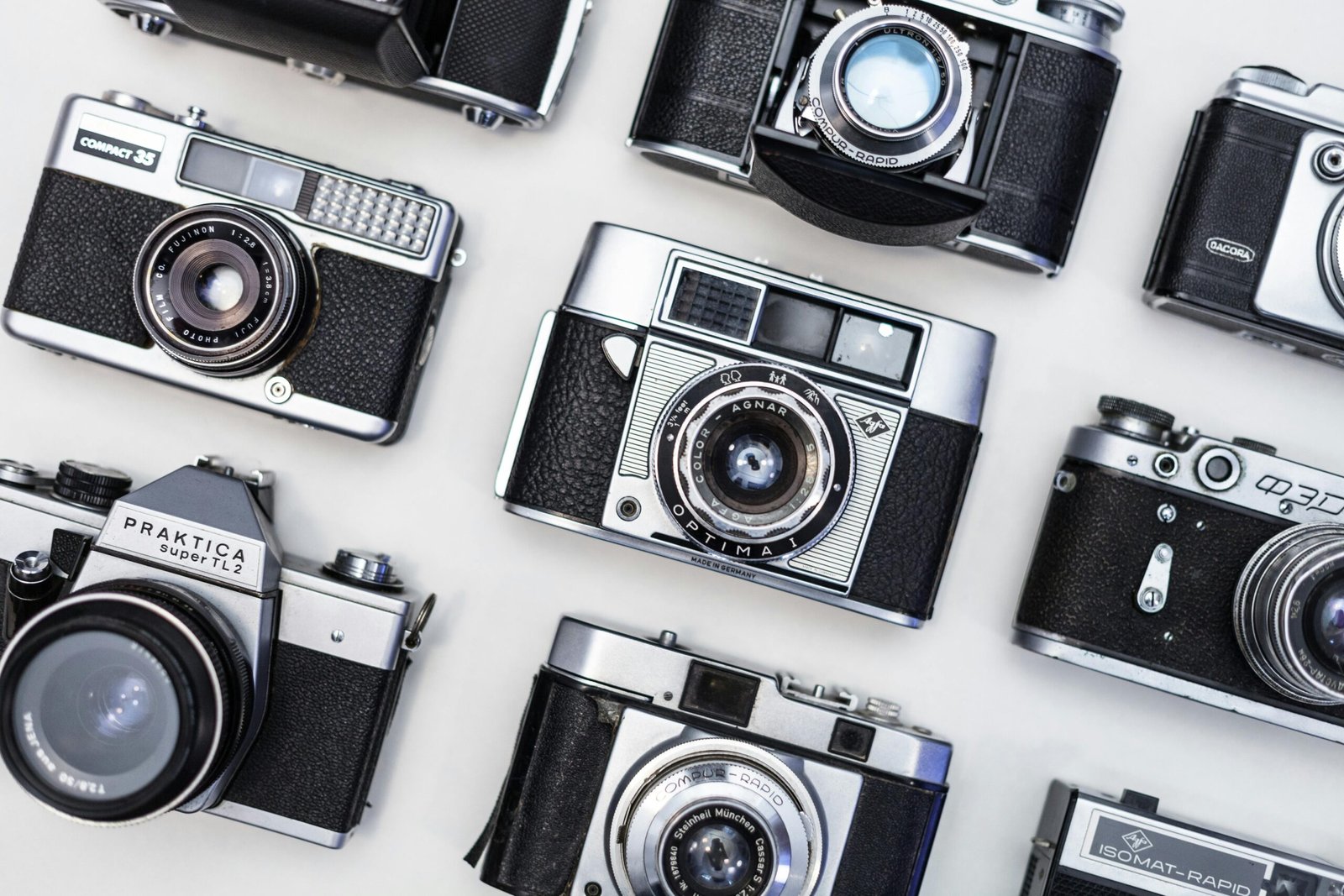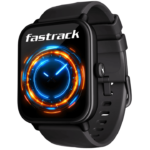Table of Contents
First and foremost, it’s important to note that the quality of a camera will go a long way in learning and having fun. A comfortable camera is with useful functions will allow you spend more time working on developing rather than fighting with non-comfortable settings. A good investment in a camera will provide one with the opportunity to expand as time progresses.
It’s not just the ability to capture images, but art & the telling of a story in pictures. A good camera will allow you to describe different styles and techniques, beginning with portrait and ending with landscapes and photography on the streets. It will force you to go out and shoot different clips in various environments and subjects to build up the photographer characteristic style within the video.
In addition, having right tools can go a long way Sometimes the right equipment will do magic in the learning process. As a beginner you will find that basic cameras allow you to take pictures in scenarios where the camera has preset options for picture that will automatically make adjustments to lighting and focus for you. Thus, an approach to being user friendly of this device will put in you more confidence as well as motivation to take more pictures.
When advancing in this field the cameras used become different but a casual camera does not restricts one’s creativity. All entry level cameras will have features you provide you with help to improve as you are learning to be a better photographer. As such, you will never have any losses when graduating from a novice, aspiring photographer to a standard professional photographer.
In conclusion, the best camera for a beginner as the project suggests would act as the foundation from which a beginner can build a step to be able to photograph. Having a good camera has its advantages when starting to learn something and helps to develop creativity as well as improve skills.
Critical Selection Parameters in Choosing a Camera
Type of Camera
DSLR CAMERA

What is a DSLR Camera?
If you have ever asked yourself why professional photographers carry around large cameras instead of ultra-thin ones found in mobile phones, then have stumbled upon discovering the magic of DSLR cameras. Digital Single-Lens Reflex is known as DSLR and is at the very core of close-up photography; a camera system that provides the best image quality and flexibility. But what really drives it? Let’s dive in.
The Basics of DSLR Cameras
A DSLR camera isn’t just any other Gadget, It is an device to bring technology and creativity together. In its simplest sense, it is aimed at collecting light through a lens and reflecting it on to a DSLR sensor through the reflex mirror. There is an Optical View Finder in this mechanism which provides the photographer the view that the lens is actually capturing.
Understanding the DSLR Sensor
The DSLR sensor can be thought of as the life of the camera. It’s the part of the system that translates incoming light into digital signal information. The bigger the sensor, the better the picture – which is why DSLR cameras are bigger, Bulkier than compact and smartphone.
Optical Viewfinder
Optical viewfinder on the other hand shows the user a clear and direct view of the scene without interference of any preview screen. Looking at it is like using a magic glass that reveals to you exactly what lies ahead of you.
Interchangeable Lenses
Feeling a desire to take a compelling landscape? Or take a picture of a working bee while it is mid-air? The versatility of DSLRs is defined by the fact that it is very easy to switch lens, no matter what a user wants to achieve.
Features of DSLR Cameras
So, what makes DSLRs special? Let’s explore their standout features.
Superior Image Quality
Thanks to larger sensors and advanced optics, DSLRs produce sharper, more vibrant images. The details they capture can make a photo look like it’s been plucked out of reality.
Manual Controls
For those who love creative freedom, DSLRs offer extensive manual controls. Adjust shutter speed, aperture, ISO, and white balance to craft the perfect shot—because sometimes, automation just doesn’t cut it.
Speed and Performance
Fast autofocus and high-speed continuous shooting make DSLRs ideal for action-packed scenes. Whether it’s a soccer game or a bird in flight, DSLRs don’t miss a moment.
Advantages of DSLR Cameras
Why do photographers swear by DSLRs? Here are some compelling reasons.
Versatility
From macro shots to wide-angle landscapes, DSLRs handle it all. Their adaptability is like having a Swiss Army knife for photography.
Durability
Built to withstand the rigors of outdoor shoots, DSLRs are robust. Weather-sealed bodies and hardy materials make them reliable companions.
Professional Appeal
There’s a reason you’ll find DSLRs in the hands of professionals. Their performance and output meet the exacting standards of commercial and artistic photography.
DSLR Camera Explained: How It Works
The mechanics of a DSLR are as fascinating as its output.
Reflex Mirror System
At the heart of a DSLR is its reflex mirror, which reflects light up into the optical viewfinder. When you press the shutter button, the mirror flips up, allowing light to hit the DSLR sensor directly. It’s a dance of precision and engineering.
Focusing Mechanisms
DSLRs employ both phase-detection and contrast-detection for autofocus. This dual system ensures speed and accuracy, giving you crisp results every time.
Conclusion
Whether you’re an aspiring photographer or a seasoned professional, a DSLR camera is more than just a device—it’s an investment in creativity. With their superior features, flexibility, and robust build, DSLRs remain an indispensable tool for anyone serious about photography.
So, are you ready to step up your photography game? Pick up a DSLR and let your imagination run wild.
FAQs
1. What is a DSLR sensor, and why is it important?
The DSLR sensor captures light and converts it into digital data. A larger sensor ensures better image quality, depth, and clarity.
2. What are the key features of DSLR cameras?
Key features include superior image quality, manual controls, speed, interchangeable lenses, and an optical viewfinder.
3. How do DSLR cameras work?
DSLRs use a reflex mirror system to direct light to an optical viewfinder. When the shutter is pressed, the mirror flips up, allowing light to hit the sensor.
4. What are the advantages of DSLR cameras?
Advantages include versatility, durability, professional-grade performance, and adaptability for different photography styles.
5. Are DSLRs suitable for beginners?
Yes, DSLRs cater to all skill levels. Entry-level models offer guided modes, while advanced users can take full advantage of manual settings.
Mirrorless Cameras

What is a Mirrorless Camera?
In the world of photography, the mirrorless camera has become a sensation. Imagine having the power of a DSLR but in a much smaller, sleeker package. A mirrorless camera is exactly what it sounds like—a digital camera that doesn’t have a mirror. Unlike traditional DSLRs, which use a mirror to reflect light from the lens into the optical viewfinder, mirrorless cameras rely on digital displays (LCD or EVF—electronic viewfinder). This absence of a mirror allows for a more compact design and lighter weight without sacrificing image quality.
How Do Mirrorless Cameras Differ from DSLRs?
So, how do mirrorless cameras stand up against the bulky DSLR? Well, think of a DSLR as an old, heavy suitcase. While it might carry a lot of things inside, it can be a pain to lug around. The mirrorless camera, on the other hand, is like a travel backpack—light, compact, and still packed with all the essentials. The key difference is the absence of a mirror, which means fewer moving parts and a much smaller body.
Mirrorless Camera Features
Compact Size and Lightweight Design
The hallmark feature of any mirrorless camera is its compact and lightweight design. Without the mirror mechanism found in DSLRs, these cameras can be significantly smaller and easier to carry around. For the photographer on the go, this makes mirrorless cameras an excellent choice.
Faster Autofocus and Shutter Speed
Mirrorless cameras come equipped with advanced autofocus technology, often relying on phase-detection sensors that enable faster and more accurate focus compared to DSLRs. This makes them perfect for capturing fast-moving subjects, whether you’re shooting sports, wildlife, or children running around.
Superior Video Quality
Looking to create high-quality video content? Mirrorless cameras deliver outstanding video capabilities with 4K resolution, slow-motion shooting, and incredible video autofocus. Whether you’re a budding YouTuber or a vlogger, these cameras are more than up to the task.
Lens Compatibility and Versatility
Although they might be smaller, mirrorless cameras don’t skimp on lens options. With a broad selection of lenses available, they offer versatility whether you’re shooting wide landscapes or close-up portraits.
Photography Tips for Mirrorless Cameras
Mastering the Art of Focus
In mirrorless cameras, autofocus is key. Take full advantage of continuous autofocus for sharp, clear images of moving subjects. Whether you’re photographing fast-moving animals or capturing the candid moments at a wedding, ensuring proper focus will be crucial.
Choosing the Right Lens
When choosing lenses, it’s important to match the lens to your specific photography needs. If you’re into portrait photography, consider a prime lens with a wide aperture. For landscapes, a wide-angle lens will be your best friend.
Adjusting Settings for Low Light Conditions
Low light conditions can be challenging, but with the right settings, you can still get stunning shots. Adjust your ISO, aperture, and shutter speed to let more light into the camera. Additionally, the electronic viewfinder in mirrorless cameras helps preview how your adjustments affect the final image in real-time.
Using Continuous Autofocus for Moving Subjects
Mirrorless cameras excel at capturing fast-moving subjects. Take advantage of their continuous autofocus feature, which tracks the subject’s movements and keeps them in focus, even if they’re darting around like a blur.
Maintenance Tips for Mirrorless Cameras
Cleaning Your Camera Body and Lens
Proper cleaning is essential to keep your mirrorless camera in top condition. Regularly wipe down the body with a microfiber cloth and make sure the lens is free from dust and smudges. A clean lens ensures sharp, clear photos every time.
Keeping the Sensor Safe
The camera’s sensor is its most sensitive component, so always be cautious when changing lenses. If dust gets on the sensor, it can affect image quality. Consider using a sensor cleaning kit or taking your camera to a professional for deep cleaning if needed.
Regular Firmware Updates
Don’t forget to update your camera’s firmware! Manufacturers often release updates that improve camera performance, fix bugs, and add new features. Keeping your firmware updated ensures your camera stays in top shape.
Common Issues with Mirrorless Cameras
Battery Drain Problems
Mirrorless cameras, while amazing, do come with a common issue: battery life. Since these cameras rely on electronic displays, they consume more power. To combat this, always carry extra batteries, and consider using a battery grip if you plan to shoot for extended periods.
Overheating During Video Recording
Overheating is a well-known issue, particularly with extended video recording. To avoid this, make sure to take breaks when shooting long videos, and keep your camera in a cool, well-ventilated space to prevent overheating.
Autofocus Challenges in Low Light
While mirrorless cameras are fantastic at autofocus in general, they can struggle in low light situations. In such conditions, switching to manual focus or increasing the lighting can help solve the problem.
Conclusion
Mirrorless cameras are revolutionizing the photography world with their compact design, cutting-edge features, and superb performance. They offer everything a photographer could need—speed, flexibility, and image quality—without the bulk. However, like all tech gadgets, they do require a little care and maintenance to ensure they continue to perform at their best. By following the tips and tricks outlined in this guide, you’ll be well-equipped to make the most of your mirrorless camera.
FAQs
1. What makes a mirrorless camera better than a DSLR? Mirrorless cameras are more compact and lightweight, offer faster autofocus, and produce superior video quality, making them ideal for both photography and videography.
2. Can you use any lens with a mirrorless camera? Most mirrorless cameras are compatible with a range of lenses, but make sure the lens mount matches your camera’s model. Some cameras also allow lens adapters for using DSLR lenses.
3. How long does the battery last on a mirrorless camera? Battery life can vary, but typically, mirrorless cameras have shorter battery life compared to DSLRs due to their reliance on electronic displays. Carrying extra batteries is always a good idea.
4. Are mirrorless cameras good for beginners? Yes! Mirrorless cameras offer user-friendly features and compact designs, making them a great choice for beginners looking to step up their photography game.
5. How do I avoid overheating while recording video with my mirrorless camera? To prevent overheating, take regular breaks between recording sessions and keep your camera in a cool environment. Some cameras also have built-in features to help mitigate this issue.
Well known Mirrorless Cameras Available

The Sony Alpha ILCE-7M3K, generally alluded to as the Sony A7 III, is a flexible full-outline mirrorless camera that has earned critical praise among photographic artists and videographers the same. Known for its amazing picture quality, high level self-adjust framework, and hearty video abilities, the A7 III is reasonable for different applications, from proficient photography to relaxed shooting. Underneath, we’ll dig into its key particulars, elements, and advantages.
Key Determinations
Sensor: The A7 III highlights a 24.2 MP Exmor R® CMOS sensor with a back-enlightened plan. This sensor size (35.9 x 24.0 mm) considers magnificent low-light execution and dynamic reach, making it ideal for shooting in testing lighting conditions.
Picture Processor: Furnished with the BIONZ X picture processor, the A7 III upgrades handling rate and generally speaking execution, considering quicker shooting and further developed sound decrease.
ISO Reach: The camera offers an ISO scope of 100 to 51,200 (expandable to 50 to 204,800), giving adaptability in different lighting circumstances while keeping up with picture quality.
Self-adjust Framework: The A7 III flaunts a crossover self-adjust framework with 693 stage location focuses and 425 difference discovery focuses. This best in class framework guarantees quick and precise centering, even in low-light conditions.
Consistent Shooting: The camera can take shots ceaselessly at up to 10 casings each second (fps) with full AF/AE following, making it appropriate for catching quick subjects.
Video Abilities: The A7 III backings 4K video recording at up to 30p with full pixel readout and no pixel binning, bringing about great video yield. It likewise includes S-Log3 and HLG profiles for upgraded variety evaluating adaptability in after creation.
In-Self-perception Adjustment (IBIS): The A7 III remembers a 5-hub for self-perception adjustment framework that makes up for camera shake during handheld shooting, considering more keen pictures and smoother video.
Plan and Assemble Quality
The Sony A7 III elements a conservative and lightweight plan commonplace of mirrorless cameras. Its strong magnesium compound body is climate fixed, giving toughness against residue and dampness. This makes it reasonable for open air photography in different circumstances.
The camera is furnished with a high-goal electronic viewfinder (EVF) with roughly 2.36 million dabs, giving an unmistakable and point by point perspective regarding your matter. The back LCD screen is a 3-inch touchscreen with 921,600 specks that slants for simple piece at various points.
Availability and Highlights
The A7 III offers different network choices to improve your shooting experience:
Wi-Fi and NFC: Worked in Wi-Fi considers simple sharing of pictures to cell phones or tablets through the Sony Imaging Edge Portable application. NFC empowers fast matching with viable gadgets.
Double Card Spaces: The camera highlights double SD card openings that help UHS-II cards, taking into account adaptable capacity choices, for example, flood recording or synchronous Crude and JPEG catch.
Battery Duration: The A7 III purposes the NP-FZ100 battery, which gives a noteworthy number of shots per charge — roughly 710 shots while utilizing the LCD screen.
Conclusion
The Sony Alpha ILCE-7M3K (A7 III) is an extraordinary full-outline mirrorless camera that consolidates trend setting innovation with easy to use highlights. Its great low-light presentation, quick self-adjust capacities, and hearty video choices make it reasonable for many visual applications. Whether you are a hopeful picture taker or an old pro hoping to overhaul your stuff, the A7 III gives the devices important to catch shocking pictures and recordings effortlessly.
With its strong form quality, broad focal point similarity through the Sony E-mount framework, and adaptable execution across different shooting situations, the Sony A7 III is a superb venture for anybody hoping to investigate the universe of photography!

The Fujifilm X-T5 is a state of the art mirrorless camera that joins cutting edge innovation with an easy to use configuration, settling on it an incredible decision for the two fans and experts. Declared on November 2, 2022, the X-T5 is furnished with a large group of highlights that improve its exhibition in different photography and videography situations. Beneath, we’ll investigate its key determinations, elements, and what makes the X-T5 hang out in the serious mirrorless camera market.
Key Determinations
Camera Type: Mirrorless
Sensor: 40.2MP X-Trans CMOS 5 HR BSI APS-C arrangement (23.5 x 15.6mm)
Focal point Mount: Fujifilm X
Handling Motor: X-Processor 5
Self-adjust Framework: Shrewd Half and half AF with up to 425 selectable AF focuses
ISO Awareness: ISO 125 to 12,800 (expandable to ISO 64 to 51,200)
In-Self-perception Adjustment (IBIS): 5-pivot adjustment giving up to 7 stops of remuneration
Max Shade Speed: 1/180,000 seconds (electronic screen)
Constant Shooting: 15fps (mechanical shade), 20fps (electronic screen)
Video Abilities:
6.2K at up to 30p
DCI4K at up to 60p
HD at up to 240p
Viewfinder: 3.69-million-spot electronic viewfinder
Back Screen: 1.84 million-spot shifting touchscreen LCD
Capacity: Double SD/SDHC/SDXC UHS-II card openings
Weight: Around 557g with battery and memory card
Plan and Fabricate Quality
The Fujifilm X-T5 highlights an exemplary plan suggestive of customary film cameras, complete with material dials for ISO, shade speed, and openness pay. This design permits photographic artists to make speedy changes without exploring through menus, upgrading the shooting experience. The camera body is conservative and lightweight, making it an optimal ally for movement and road photography.
Regardless of its little size, the X-T5 is worked to endure testing conditions. It incorporates climate fixing that safeguards against residue and dampness, guaranteeing solid execution in different conditions. The ergonomic grasp gives solace during expanded shooting meetings, permitting picture takers to keep up with security while catching pictures.
High level Self-adjust Framework
One of the champion elements of the Fujifilm X-T5 is its Savvy Mixture Self-adjust framework. With up to 425 selectable AF focuses, this framework consolidates stage recognition and differentiation identification strategies for quick and precise centering. The camera additionally offers subject discovery abilities for people, creatures, birds, vehicles, and that’s only the tip of the iceberg, making it flexible for different
photography styles.
The self-adjust execution succeeds in low-light circumstances also, permitting clients to catch sharp pictures even in testing conditions. This element is especially gainful for natural life photographic artists or those shooting in faintly lit settings.
Noteworthy Video Capacities
The Fujifilm X-T5 isn’t simply a stills camera; it likewise sparkles in video recording. It upholds high-goal video recording choices, for example,
6.2K Video: Catch shocking video at goals of up to 6240 x 3510 pixels at outline paces of up to 30p.
DCI4K Recording: Shoot in DCI4K goal (4096 x 2160) at outline paces of up to 60p.
Fast Recording: Record HD video at a noteworthy edge pace of up to 240p for slow-movement impacts.
Furthermore, the camera upholds Apple ProRes and Blackmagic Crude configurations by means of HDMI yield, making it appropriate for proficient video creation work processes.
Improved Picture Adjustment
With its high level in-self-perception adjustment (IBIS) framework giving up to seven stops of remuneration, the Fujifilm X-T5 diminishes camera shake during handheld shooting. This component is significant while shooting in low light or at more slow screen speeds, guaranteeing more keen pictures without the requirement for a stand.
Conclusion
The Fujifilm X-T5 stands apart as a strong mirrorless camera that joins high-goal imaging capacities with cutting edge self-adjust and video highlights. Its exemplary plan and natural controls make it available for the two fledglings and prepared photographic artists the same. Whether you’re catching staggering scenes or shooting great recordings, the X-T5 conveys outstanding execution across different situations.
With its hearty form quality, great particulars, and adaptability in both photography and videography, the Fujifilm X-T5 is a superb speculation for anybody hoping to raise their imaginative interests. Investigate the universe of photography with certainty utilizing this exceptional camera!
.
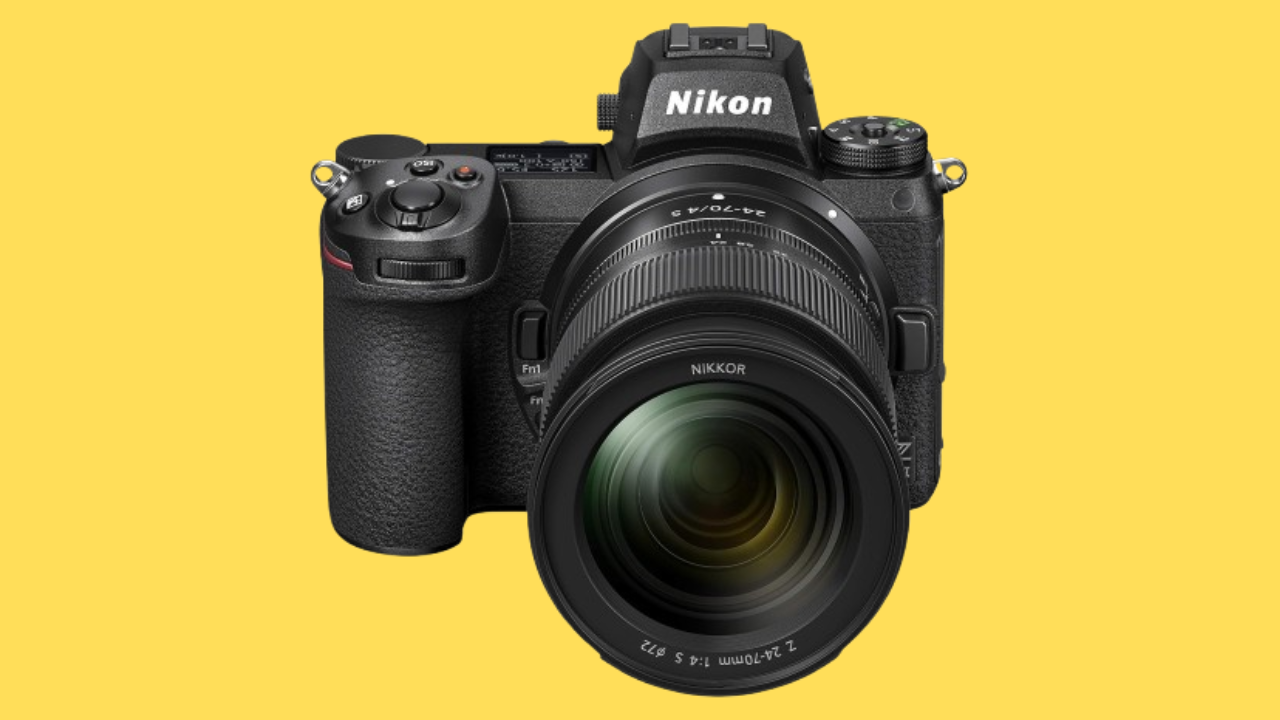
Nikon Z6 II: A Comprehensive Overview
The Nikon Z6 II is a strong full-outline mirrorless camera intended for the two fans and experts. Expanding on the outcome of its ancestor, the Z6, this camera offers upgraded highlights, further developed execution, and flexibility that pursue it a great decision for an extensive variety of photography styles, from scenes to pictures and video work. Here is a top to bottom gander at the details, elements, and advantages of the Nikon Z6 II.
Key Particulars
Sensor: The Z6 II elements a 24.5 MP BSI (Posterior Enlightened) CMOS sensor that gives brilliant picture quality and low-light execution. The sensor size is 35.9 x 23.9 mm (FX design), which takes into account more prominent profundity of field and better command over foundation obscure.
Double EXPEED 6 Processors: This camera is controlled by double EXPEED 6 picture processors, which altogether upgrade speed and execution. This redesign considers quicker picture handling, further developed self-adjust capacities, and a bigger cushion for ceaseless shooting.
Nonstop Shooting: The Z6 II can take shots constantly at up to 14 casings each second (fps) in Crude or JPEG design, making it ideal for catching quick subjects.
Video Abilities: The camera upholds 4K UHD video recording at up to 60p with full-outline downsampling, offering great video yield. It likewise includes N-Log and HDR (HLG) capacities for proficient grade video creation.
Self-adjust Framework: With a 273-point cross breed self-adjust framework that incorporates eye-discovery AF for people and creatures, the Z6 II succeeds in following subjects precisely. This component is especially helpful for representation photography and natural life shooting.
Picture Adjustment: The Z6 II remembers a 5-pivot for self-perception adjustment framework (IBIS), which makes up for camera shake and considers more keen pictures even at more slow screen speeds.
Double Card Spaces: This model elements double memory card openings — one for CFexpress Type B/XQD cards and one more for SD UHS-II cards — taking into consideration adaptable capacity choices, for example, flood capacity or concurrent recording of Crude and JPEG documents.
Plan and Fabricate Quality
The Nikon Z6 II flaunts a powerful form quality with climate fixing that safeguards against residue and dampness, making it reasonable for open air photography in different circumstances. Its ergonomic plan guarantees happy with taking care of during expanded shooting meetings. The camera includes a shifting 3.2-inch touchscreen LCD with 2.1 million spots for simple route and picture playback.
The electronic viewfinder (EVF) offers a goal of 3.69 million spots with an amplification of 0.8x, giving an unmistakable and point by point perspective regarding your matter. The EVF likewise takes into account continuous openness reviews, empowering photographic artists to perceive what changes mean for the last picture prior to catching it.
Availability and Highlights
The Z6 II offers different availability choices, including Wi-Fi and Bluetooth support through the SnapBridge application, permitting consistent sharing of pictures to cell phones or tablets. It additionally includes USB-C network for in-camera charging or persistent power during broadened shoots.
Extra prominent highlights include:
Center Topping: Helps manual center clients by featuring in-center regions.
Zebra Stripes: Helps with distinguishing overexposed regions inside the edge.
Sound Choices: Worked in sound system receiver with an earphone jack for checking sound levels during video recording.
Conclusion
The Nikon Z6 II is an uncommon mirrorless camera that consolidates cutting edge innovation with easy to understand highlights. Its great low-light presentation, quick self-adjust capacities, and flexible video choices make it reasonable for a large number of visual applications. Whether you are a hopeful picture taker or an old pro hoping to redesign your stuff, the Nikon Z6 II gives the instruments important to catch shocking pictures and recordings effortlessly.
With its vigorous form quality, double card spaces, and broad focal point similarity through the Nikon Z mount framework, this camera is intended to fulfill the needs of present day photography while offering space for development as your abilities create. Investigate the universe of photography with certainty utilizing the Nikon Z6 II!
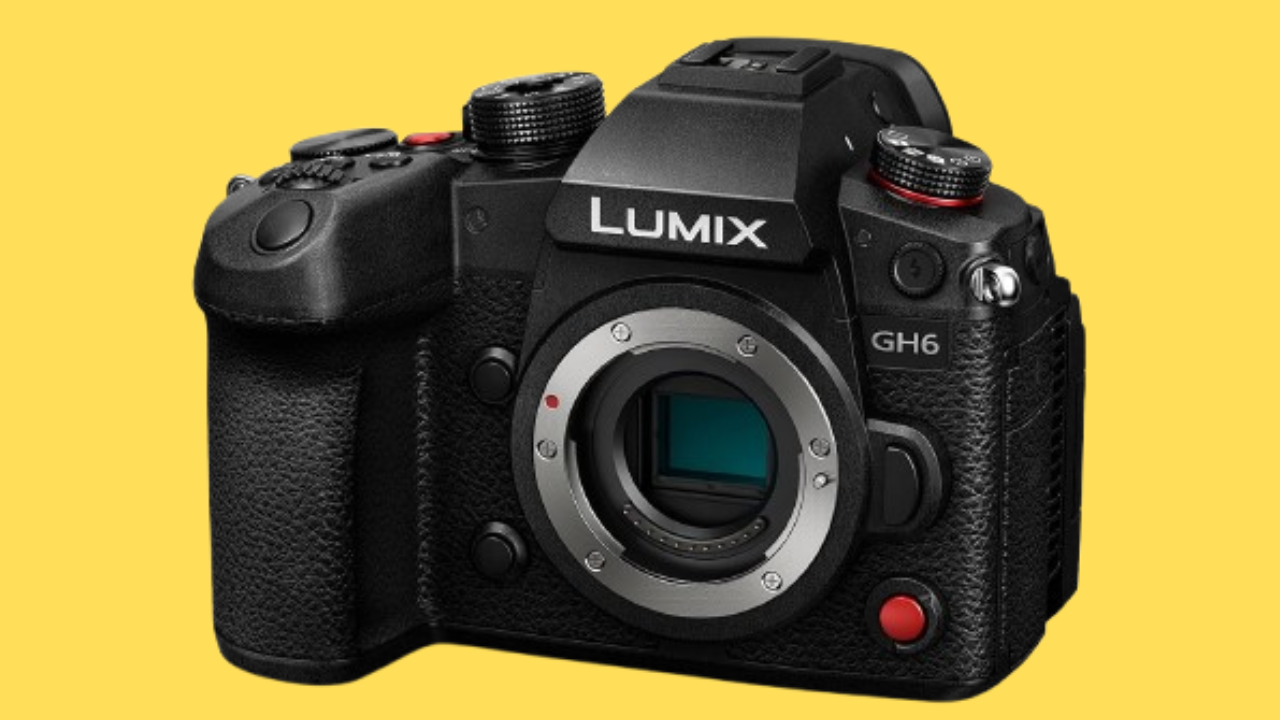
A1 among videographers, this miniature four-thirds camera flaunts progressed video highlights, for example, 4K recording at 60fps and phenomenal adjustment.
Conclusion
Mirrorless cameras address a huge development in computerized photography innovation, offering various benefits over customary DSLRs while keeping up with great imaging capacities. Their smaller size, quick self-adjust frameworks, quiet activity, and constant openness reviews make them an alluring choice for the two amateurs and old pros the same.
As you consider your next camera buy, gauge the advantages of mirrorless frameworks against your particular photography needs and inclinations. With progressions in innovation constantly working on their presentation and flexibility, putting resources into a mirrorless camera could be a superb decision for catching staggering pictures and recordings!
Compact Cameras
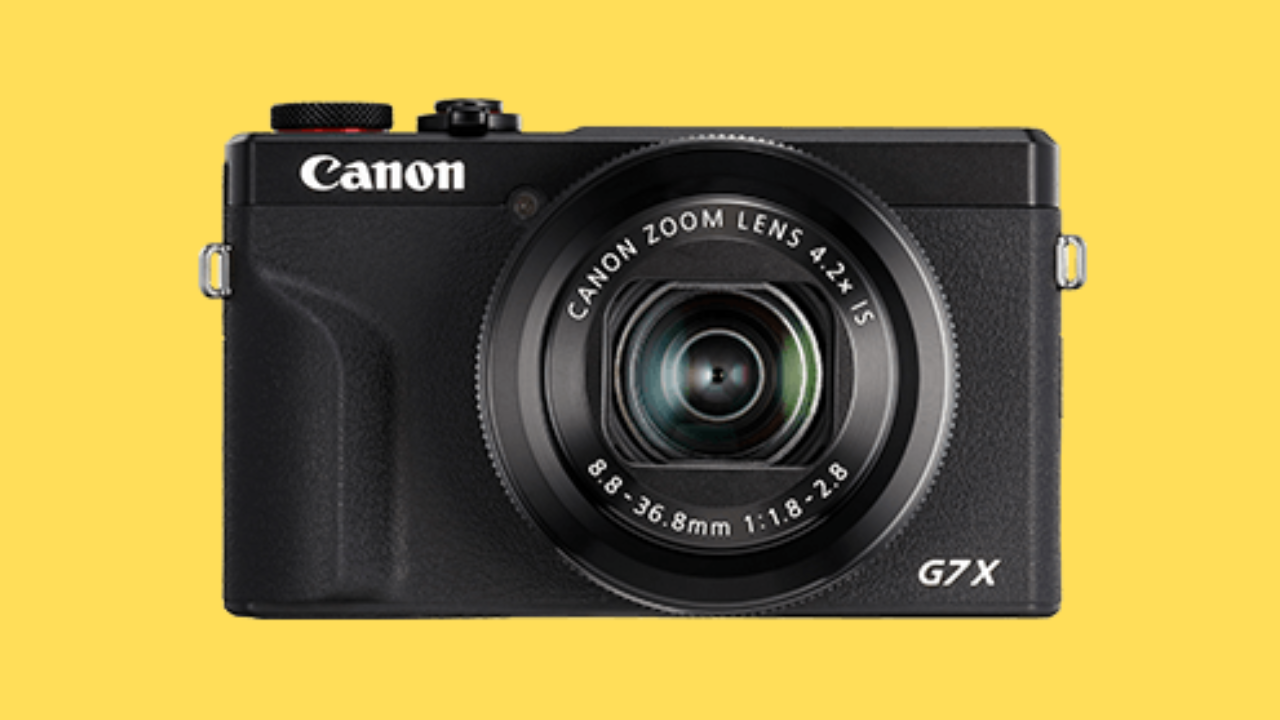
Suitable for everyday photographers, compact cameras are portable and user-friendly. Most compact cameras come with fixed lenses but are perfect for travel or daily use. Most compact cameras now feature advanced features like Wi-Fi connectivity and high-resolution sensors.
Megapixels:
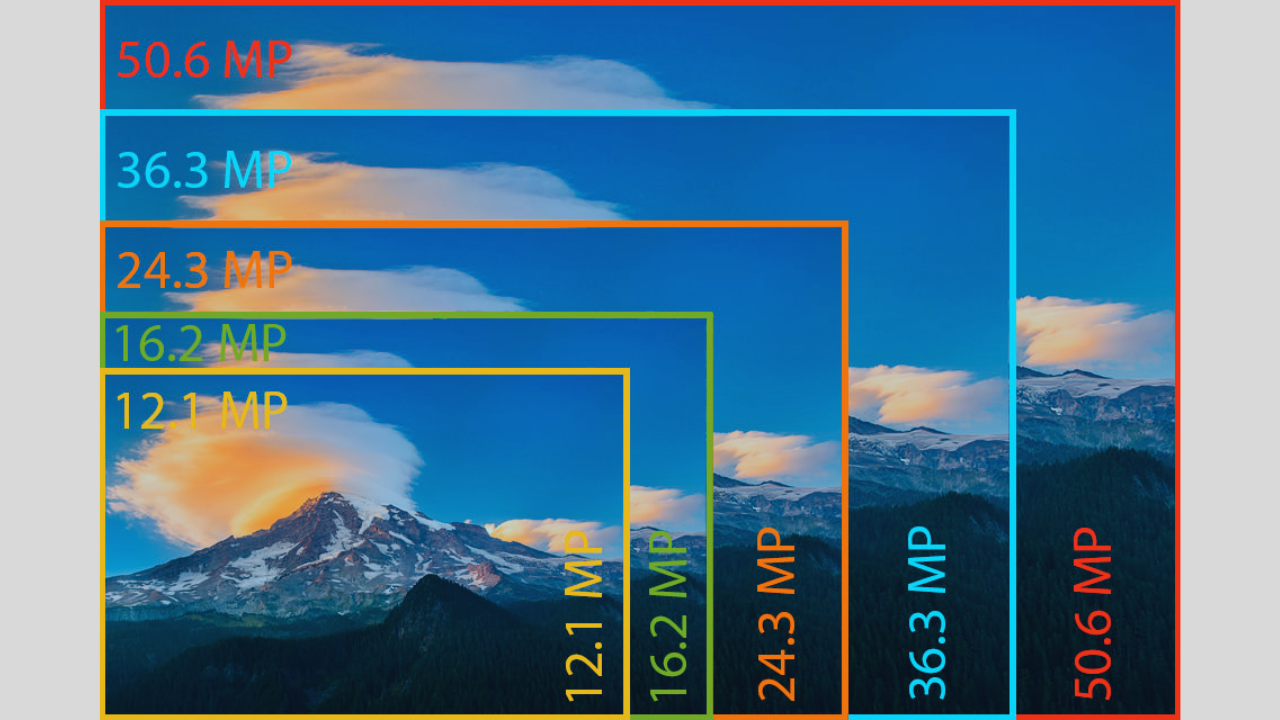
What is a Compact Camera?
A compact camera, often called a point-and-shoot camera, is a small, portable digital camera designed for casual photography. These cameras are designed to be user-friendly, with automatic settings that make them ideal for quick and easy snapshots. Compact cameras typically feature a built-in lens, making them incredibly lightweight and convenient to carry, without the complexity of interchangeable lenses found in more advanced cameras like DSLRs or mirrorless models.
How Compact Cameras Compare to Other Cameras
When you think of a compact camera, imagine it as the “smartphone” of the photography world. It’s small, convenient, and always ready to capture moments. Unlike DSLRs and mirrorless cameras that require more knowledge to operate, compact cameras are all about simplicity. They don’t offer the same level of manual control or image quality, but they’re perfect for everyday use, especially when you want something portable and easy to use.
Features of Compact Cameras
Size and Portability
One of the most notable features of compact cameras is their size. These cameras are designed to fit in your pocket or small bag, making them incredibly convenient to carry around. Whether you’re out for a walk, attending a party, or traveling the world, a compact camera can always come along without being a burden.
Ease of Use and Automatic Settings
Compact cameras excel in ease of use. With most models, you don’t have to worry about adjusting aperture or shutter speed—just point and shoot. This makes them perfect for beginners or those who want to take good photos without needing to understand the complexities of photography.
Image Quality and Lens Options
While compact cameras have a smaller sensor than more advanced cameras, they still produce good-quality images, especially in well-lit conditions. Many compact cameras also come with a fixed zoom lens, offering versatility for various photography situations. However, they may not be as sharp or detailed as those produced by larger sensors found in DSLRs.
Battery Life and Performance
Compact cameras tend to have fairly decent battery life, especially for short photography sessions. However, since these cameras rely on LCD screens for composing photos, battery life can quickly drain with extended usage. It’s always a good idea to carry extra batteries for longer trips or events.
Benefits of Compact Cameras
Convenience for Everyday Use
Compact cameras are perfect for everyday photography needs. Whether you’re taking pictures of your family, capturing moments at a party, or snapping a photo of your meal at a restaurant, compact cameras make it easy to get high-quality shots with minimal effort.
Ideal for Travel and Quick Shots
For travel enthusiasts or those on the go, compact cameras are a dream. You can slip them into your pocket and capture photos in an instant, without the bulk of carrying a larger camera. They’re particularly great for those who want to capture memories while traveling without the hassle of carrying heavy gear.
Photography Tips for Compact Cameras
Mastering Automatic Modes
To get the most out of your compact camera, familiarize yourself with its automatic settings. Many models come with scene modes for different conditions, like portraits, landscapes, and low light. These modes take care of the settings for you, ensuring you get the best shot every time.
Using Zoom Effectively
While compact cameras often have fixed zoom lenses, it’s important to use them strategically. Instead of zooming in on distant objects, try to get closer to your subject for a more dynamic shot. The zoom feature can be useful for framing shots, but be mindful not to overuse it, as it can result in image distortion.
Low Light Photography Tips
Low light can be tricky for compact cameras since their sensors aren’t as large as those in more advanced models. To improve your low-light shots, use a steady hand, increase the camera’s ISO setting, or make use of a tripod to avoid blurry images.
Common Issues with Compact Cameras
Limited Zoom Range
Unlike DSLR or mirrorless cameras, compact cameras often have a limited zoom range. This means you might not be able to capture distant objects or zoom in for detailed shots as effectively. While this isn’t a dealbreaker, it’s something to keep in mind when choosing a camera for specific photography needs.
Lower Image Quality in Low Light
While compact cameras perform well in bright lighting, they tend to struggle in low light. Due to their smaller sensors, the camera may introduce noise into the image, resulting in a less sharp and more grainy photo. To overcome this, try using a higher ISO setting or relying on natural light sources.
Limited Manual Control
Compact cameras are designed to be user-friendly, which means they often lack manual controls for adjusting exposure, shutter speed, and other settings. While this is great for beginners, it can be limiting for more experienced photographers who want full control over their shots.
Conclusion
Compact cameras are a fantastic choice for those who want simplicity and convenience in their photography. They offer portability, ease of use, and sufficient image quality for casual snapshots. While they may not match the performance of more advanced cameras in terms of manual control or low-light capabilities, they’re perfect for everyday use and travel. Whether you’re a beginner or just need a lightweight camera for quick shots, a compact camera is a great option.
FAQs
1. Are compact cameras good for professional photography? Compact cameras are not typically used for professional photography, as they lack manual controls and advanced features. However, they are excellent for casual, everyday photography and travel.
2. Can I use a compact camera for low-light photography? Compact cameras may struggle in low light due to their smaller sensors, but with proper techniques like adjusting ISO settings and using a tripod, you can still capture decent shots.
3. How does a compact camera differ from a smartphone camera? While smartphones have excellent cameras, compact cameras generally offer better zoom capabilities, faster shutter speeds, and more dedicated controls for photography, providing better image quality for specific needs.
4. Do compact cameras have Wi-Fi or Bluetooth? Many modern compact cameras come with built-in Wi-Fi or Bluetooth, allowing you to transfer images wirelessly to your smartphone or computer.
5. Can I change the lens on a compact camera? No, compact cameras typically have a fixed lens, meaning you cannot change lenses like you would with a DSLR or mirrorless camera. However, some models offer built-in zoom for versatility.

The Ordinance EOS R10 is a noteworthy section level mirrorless camera that consolidates progressed highlights with easy to use controls, settling on it an optimal decision for the two novices and aficionados. Sent off in 2022, this camera is essential for Group’s RF series and is intended to convey top notch pictures and recordings in a smaller structure factor.
Key Highlights
Sensor: The EOS R10 highlights a 24.2 MP APS-C CMOS sensor, which gives magnificent picture quality and detail, permitting photographic artists to catch staggering shots in different lighting conditions.
Self-adjust Framework: Outfitted with Standard’s Double Pixel CMOS AF II, the R10 offers quick and exact self-adjust with up to 651 AF focuses. This framework succeeds in following moving subjects, making it ideal for activity photography, untamed life, and sports.
Ceaseless Shooting: The camera can take shots constantly at up to 15 casings each second (fps) with the mechanical screen and up to 23 fps with the electronic shade, guaranteeing you never miss a second.
Video Capacities: The EOS R10 upholds 4K video recording at 30p, oversampled from 6K for outstanding quality. It likewise includes choices for 4K at 60p, making it reasonable for an assortment of video projects.
Low Light Execution: With an ISO scope of 100-32,000 (expandable to 51,200), the R10 performs well in low-light conditions, permitting you to catch clear pictures even in testing conditions.
Vari-Point Touchscreen: The camera incorporates a 3-inch completely expressed touchscreen LCD, which is ideally suited for vlogging or catching inventive points. This element improves convenience by permitting clients to approach shots according to different points of view.
Smaller Plan: Weighing around 426 grams, the EOS R10 is lightweight and versatile, making it simple to continue every one of your experiences without forfeiting execution.
Conclusion
The Group EOS R10 is a flexible and strong mirrorless camera that takes care of photographic artists and videographers searching for a minimal arrangement without settling on highlights. Its high level self-adjust framework, great consistent shooting capacities, and top notch video recording pursue it a superb decision for catching everything from regular minutes to proficient grade content. Whether you’re simply beginning your photography process or hoping to redesign your stuff, the EOS R10 gives the instruments you want to release your inventiveness.

The Nikon D3500 is an entry-level DSLR camera designed for beginners looking to explore the world of photography. Featuring a 24.2 MP APS-C CMOS sensor, this camera delivers impressive image quality with vibrant colors and sharp details. The D3500 is powered by the EXPEED 4 image processor, which enhances performance and enables a wide ISO range of 100-25,600, making it suitable for various lighting conditions.One of the standout features of the Nikon D3500 is its Guide Mode, which provides on-screen assistance to help users learn the basics of photography and understand different shooting scenarios. This makes it an excellent choice for those new to photography. The camera also boasts an 11-point autofocus system and can shoot continuously at up to 5 frames per second, allowing for effective action shots.The D3500 supports Full HD video recording and offers a fixed 3-inch LCD screen for easy viewing and composition. Although it lacks Wi-Fi connectivity, it does feature Bluetooth for quick image transfers to smartphones. With a compact design weighing just 365 grams, the Nikon D3500 is lightweight and portable, making it perfect for travel and everyday use.Overall, the Nikon D3500 is a user-friendly DSLR that combines advanced features with an intuitive interface, making it an ideal choice for aspiring photographers looking to develop their skills.

Fujifilm X-T30 II: A Compact Powerhouse for Photographers
The Fujifilm X-T30 II is a versatile and compact mirrorless camera that caters to both photography enthusiasts and professionals. Building on the success of its predecessor, the X-T30, this camera features a 26.1 MP APS-C X-Trans CMOS 4 sensor that delivers exceptional image quality with minimal noise, even in low-light conditions. The camera’s lightweight design makes it perfect for travel and street photography, allowing users to capture stunning images without the burden of heavy gear.Equipped with the advanced X-Processor 4, the X-T30 II offers fast and efficient performance, enabling continuous shooting at up to 8 frames per second with the mechanical shutter and an impressive 30 frames per second with the electronic shutter (with a slight crop). This speed is complemented by an intelligent autofocus system featuring 425 phase-detection points, ensuring accurate focus on subjects, whether they are still or in motion. The X-T30 II also excels in video capabilities, supporting DCI and UHD 4K recording at up to 30p, as well as high-speed Full HD recording at 240fps for stunning slow-motion footage. With features like F-Log recording for enhanced post-production flexibility and built-in film simulation modes, this camera is ideal for videographers looking to achieve a cinematic look. In terms of usability, the X-T30 II boasts a tilting 3-inch touchscreen LCD and a high-resolution electronic viewfinder (EVF) with approximately 2.36 million dots, providing clear visibility in various shooting conditions. The camera’s classic design includes manual dials for shutter speed and exposure compensation, appealing to photographers who appreciate traditional controls. With built-in Wi-Fi and Bluetooth connectivity, sharing images and controlling the camera remotely via a smartphone is seamless. The Fujifilm X-T30 II is not just a camera; it’s a creative tool that empowers photographers to explore their artistic vision while delivering outstanding performance in a compact package.

The Sony Alpha ZV-E10L is a versatile mirrorless camera designed specifically for content creators, particularly vloggers and influencers. Featuring a 24.2MP APS-C Exmor CMOS sensor, this camera captures stunning detail in both photos and videos, making it ideal for high-quality content production.
Key Features
- Interchangeable Lenses: The ZV-E10L supports Sony’s E-mount lenses, allowing users to customize their setup according to specific shooting needs. This flexibility enables creative expression through various lens options, from wide-angle to telephoto.
- 4K Video Recording: The camera excels in videography, offering 4K recording capabilities at up to 30 frames per second (fps). It also supports Full HD recording at up to 120 fps, providing options for smooth slow-motion footage.
- Advanced Autofocus: With a fast hybrid autofocus system featuring 425 phase-detection points and real-time eye autofocus, the ZV-E10L ensures quick and accurate focusing on subjects, making it perfect for dynamic shooting environments.
- User-Friendly Design: The camera includes a fully articulated touchscreen LCD that allows for easy framing of shots from various angles, making it particularly useful for vlogging and self-portraits.
- Built-in Microphone: Equipped with a high-quality directional microphone and a windscreen, the ZV-E10L captures clear audio even in outdoor settings, enhancing the overall production quality of videos.
- Creative Features: The camera includes specialized settings for vloggers, such as a Bokeh Switch for achieving beautiful background blur and a Product Showcase Setting that quickly shifts focus from the presenter to an object held in front of the lens.
Connectivity
The ZV-E10L offers seamless connectivity options with built-in Wi-Fi and Bluetooth, enabling easy sharing of content to smartphones or tablets. This feature is particularly beneficial for content creators who need to upload their work quickly to social media platforms.
Conclusion
The Sony Alpha ZV-E10L is an exceptional choice for aspiring vloggers and content creators looking for a reliable camera that delivers high-quality video and image performance. With its user-friendly features, interchangeable lens system, and advanced autofocus capabilities, this camera is designed to meet the demands of modern content creation while providing the flexibility needed for artistic expression. Whether you’re capturing everyday moments or producing professional-grade videos, the ZV-E10L is equipped to help you achieve your creative vision.

The Olympus OM-D E-M10 Mark IV is a compact and versatile mirrorless camera designed for both photography enthusiasts and beginners looking to elevate their skills. Featuring a 20.3 MP Live MOS sensor, this camera delivers outstanding image quality with excellent low-light performance and a wide dynamic range. One of the standout features of the E-M10 Mark IV is its 5-axis in-body image stabilization, which helps reduce camera shake, allowing for sharper images even at slower shutter speeds. The camera boasts a fast and accurate 121-point contrast-detection autofocus system, making it easy to capture moving subjects with precision. The E-M10 Mark IV also supports 4K video recording at up to 30 frames per second, making it a great option for videographers. Its tilting touchscreen LCD is perfect for selfies and creative angles, while the 2.36 million-dot OLED electronic viewfinder provides a clear and detailed view of your subject. With built-in Wi-Fi and Bluetooth connectivity, sharing images and videos is seamless. The camera can be charged via USB, adding convenience for on-the-go shooting. Weighing just 383 grams, the E-M10 Mark IV is lightweight and portable, making it an ideal companion for travel and everyday photography. Overall, the Olympus OM-D E-M10 Mark IV combines advanced technology with user-friendly features, making it an excellent choice for capturing stunning photos and videos in various shooting conditions.
Considering these suggestions, starting photographers can get some models suited especially to their needs while also providing amazing performance at reasonable prices.
Tips for Starting Photography
Learn the Basics: Understand what exposure, aperture, shutter speed, and ISO do. Once you understand those, you’ll make much better decisions in the field when making adjustments.
Practice Regularly: The more you shoot, the better you’ll become! Experiment with different settings and subjects—don’t be afraid to make mistakes; they’re part of the learning process.
- Photography Communities: Engage with fellow photographers online or in local groups to share experiences, seek advice, and gain inspiration from others’ work.
. - Accessories: Invest in a good sturdy tripod, extra batteries, and a good camera bag to protect your gear while out shooting. Accessories like lens filters can also enhance image quality under certain conditions.
- Edit Your Photos : Simple photo editing skills can greatly enhance your final images. Software such as Adobe Lightroom or free alternatives like GIMP may help you enhance colors and correct exposure issues.
Conclusion
Choosing the right camera as a newbie is not something that should scare anyone. Taking into account the type, ease of use, budget, and key features, one can surely find a camera that best fits one’s needs. Photography is all about creativity and expression—your gear should enhance your experience rather than hinder it.
Equipped with this guide, you now have the knowledge needed to make an informed purchase decision regarding your first camera. The rest is in your hands, coming into photography with confidence, knowing you can create beauty out of beautiful moments!

